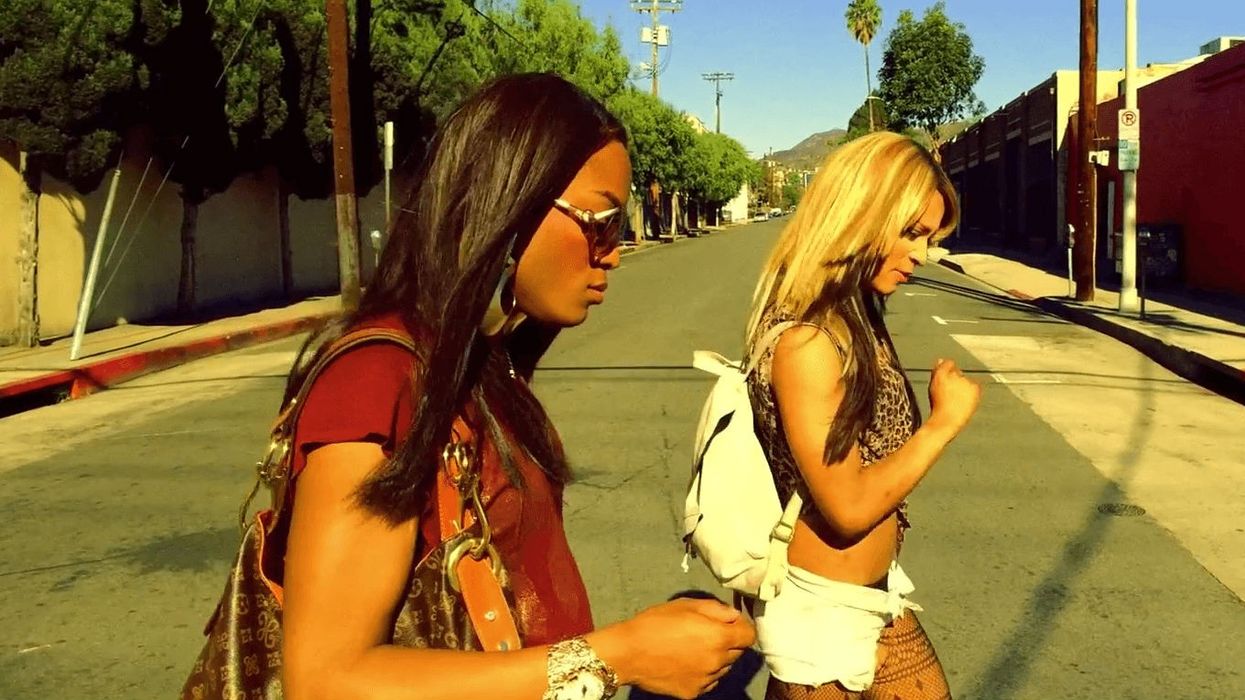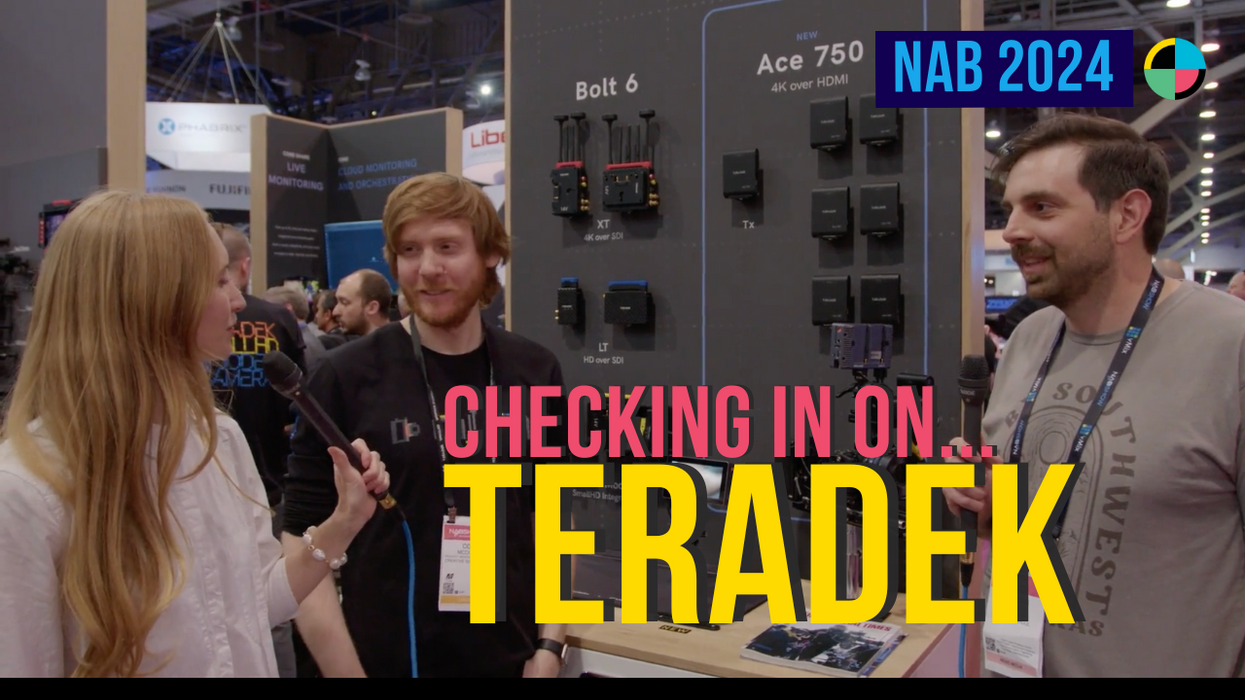With five feature films under his belt, Sean Baker is a man that many would agree is a "prolific" filmmaker. He's also a man who is very aware of the fact that you've only seen Tangerine.
"It keeps you in check," he lamented in a master class for IFP Week held on Sunday at Brooklyn's BRIC Media Center. "As a filmmaker, you have to prove yourself each and every time as if it’s your first time. Tangerine was the one that opened up doors for us, so I think that for the most part that’s the one that people became aware of, but yeah it's frustrating."
The success of Tangerine, which was famously shot on an iPhone 5s, also resulted in Baker securing financing for his latest film, The Florida Project. Audiences and critics from Cannes and Toronto have raved about the film, which was picked up by A24 and will have its U.S. premiere at the New York Film Festival on October 1.
Even with the prospects of finally having a big name actor in Willem Dafoe and a far more substantial budget than his previous films, Baker's trademark run 'n' gun filmmaking and use of first-time talent are truly the backbone of The Florida Project. The director sat down with Vulture's Emily Yoshida to discuss a few lessons he has learned by relying on guerrilla-style filmmaking throughout a narrative-driven career.
How to film with as minimal a footprint as possible
Baker's second feature, Take Out, follows an illegal Chinese immigrant, Ming Ding, who falls behind on payments on an enormous smuggling debt. Ding works as a Chinese delivery man and has only until the end of the day to come up with the money. Baker revealed that for this film, the crew was for the most part just three people. Baker as director and DP, his producer Shih-Ching Tsou and their star Charles Jang.
"We learned so much from that shoot," Baker remembered. "It was such guerrilla filmmaking, I mean it was really guerrilla filmmaking. I’m not condoning this, but there were no permits, no insurance, we were running around crazy, stealing everything."
"When you’re looking for locations in general, it’s really about respect."
Perhaps the most long-running piece of education Baker took away from the shoot was how to secure locations. "We had to shoot at this Chinese takeout place on the Upper West Side. Obviously, we didn’t have the money to buy them out and own this location. So we just basically promised them that we would not interfere with their customers, that they could keep the business open, and that we were small enough where we'd be in the shadows. We’ve continued to do that throughout my career. Donut Time in Tangerine. In The Florida Project, the hotel was still running, it’s something that we’ve learned how to do."
When asked by an audience member how they were able to get these locations to agree so readily, Baker replied, "When you’re looking for locations in general, it’s really about respect. Respect for their business, it’s their livelihood. You can’t just go in there because it’s not your place."
"Our approach was usually bonding with them, befriending them," he continued. "Especially, with Tangerine. In Los Angeles, the entire town is very savvy to this. Locations are really expensive. But our producers took the time to go and meet business owners, find a connection, tell them about what we were doing, why we were doing it, and how what we were doing was different. And they basically got every location in Tangerine for free."

Using locations like this requires a few things. For one, you have to have the smallest crew possible, but perhaps more importantly, you have to be ready to adapt to any scenario. "You have to know that you don’t have control," Baker explained. "You will have to sometimes shut down, you’ll have to sometimes walk away. We had such a skeleton crew on both films that we would never get frustrated. If a bunch of customers came in and we realized that this might affect their business, we’d just simply cut and walk away."
This openness to change also brings up some advantages in casting. Using people straight off the street as background (or even featured) roles is pretty much a staple in all of Baker's films. "Or, if you could tell the customer was kind of down, you could actually keep filming and see what happens. Then you’d simply approach them afterward and say, 'we’re shooting an independent film, there’s the camera, would you kindly sign this release for us?' You’re taking your story and throwing it into the real world and watching what happens. I find that very exciting."
Using the iPhone to enhance the run 'n' gun style
After its screening at Sundance 2015, the media focused heavily on how Tangerine was shot—on an iPhone 5s with Moondog Labs 1.33x Anamorphic Adapters which gave the camera department around a 2.40:1 aspect ratio from the original 16:9. Headlines everywhere proclaimed that the future had indeed arrived, and now anyone could shoot an entire feature film on an iPhone and get into one of the premiere festivals in the world.
"People still look it at as if shooting on the iPhone was a stunt, and it truly wasn’t."
At that point, and even to this day, the titleTangerine could pretty much be interchanged with That iPhone Movie. It was great press, but not exactly what Baker had in mind. In fact, Baker admitted, "I went to Sundance that year expecting that we were going to be one of ten films shot on the iPhone that year. We were the only one."
"People still look it at as if shooting on the iPhone was a stunt, and it truly wasn’t. It really did come from a very organic place. We didn’t want people to know it until after our premiere at Sundance. The only people that did know were the programmers at Sundance. We wanted it to be a talking point after [the screening], but it wasn’t something that we wanted to sell the film on," Baker explained.
Tangerine had an incredibly small budget and an incredibly large concept. The iPhone fit their needs. "We were looking at it being like, 'this is absolutely impossible to do with this money, we’re going to have to figure out where we can cut costs,'" Baker remembered. "It happened to be that the iPhone 5s had just come out with HD video that was a big technological advancement, and then it just happened to be that there were all these tools that came out in that one particular, perfect moment. Filmic Pro had just come out, the anamorphic adapter was in its prototype stage, but there was a Kickstarter campaign so we reached out to them and they sent us their prototypes."

Removing intimidation with familiar technology
Aside from the clear financial advantages of shooting on the iPhone, Baker found it fit his filmmaking style perfectly. "We didn’t even know how much this was going to help us. We’re not exactly shooting in the safest area, so we didn’t want to draw attention to ourselves, and if you saw us from ten feet away, it would look like we were just shooting selfies or a YouTube video," he explained. "If anything, our biggest giveaway that we were a professional crew was our boom pole, so I would try to get that wrapped as early as possible. We were able to run 'n' gun and remove all intimidation."
Not only did it fall in line in with his preference for keeping a minimal footprint, but it actually helped with his tendency to feature regular people in his film too. "There’s three groups," Baker pointed out, "There’s professionals, first-timers, and non-professionals. Non-professionals are people that you basically grab at the moment, on the street. Whether they’ll ever act again in a movie, you don’t know. But you shove a camera in their face, it’s quite intimidating. You do that with an iPhone! Everyone has a smartphone, so suddenly you realize, ‘oh they’re very comfortable, why?’ Because this is familiar."













